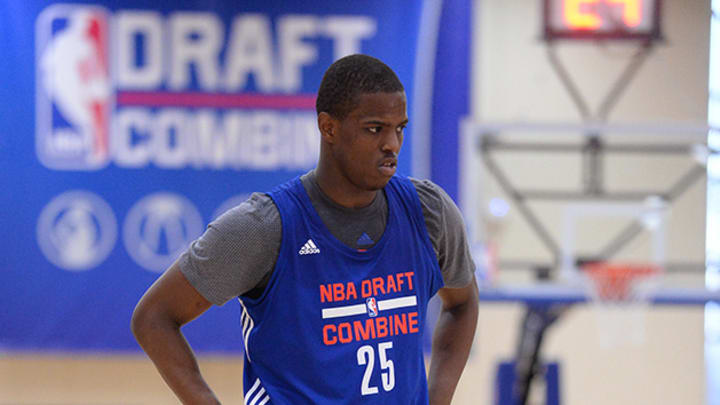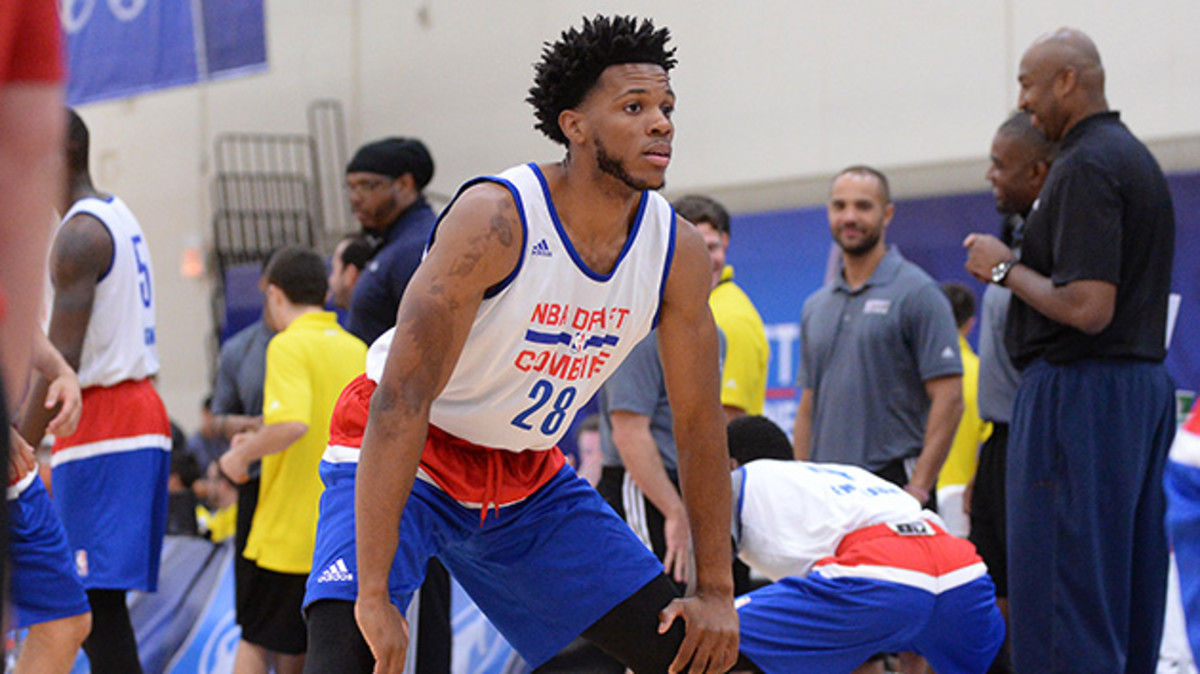At NBA combine, college players crave information

Get all of Brian Hamilton’s columns as soon as they’re published. Download the new Sports Illustrated app (iOS or Android) and personalize your experience by following your favorite teams and SI writers.
CHICAGO — Nigel Hayes arrived here last week for the NBA draft combine on a fact-finding expedition, hopeful to hear what he wanted to hear about his future. Yet the Wisconsin forward still seemed immersed in the present, in his eclectic, entertaining college existence. There were former Badgers teammates Frank Kaminsky and Duje Dukan shadowing Hayes as he did his vertical leap testing. There was Kaminsky, now a Charlotte Hornets forward, crashing the media room, introducing himself as Hayes before saying he was kidding—“J.K.!” is what Kaminsky shouted, to be specific—and leaving. There was the actual Nigel Hayes, considering a question about what he’d do if he weren’t a basketball player.
“I’d probably be working to be the CEO of Nike,” he said. “Or maybe I’d be a tennis player. I would like to try. I think I’m athletic enough, skilled enough, coordinated enough, that I think I’d be an at least decent tennis player.”
The SI Extra Newsletter Get the best of Sports Illustrated delivered right to your inbox
Subscribe
And yet as Hayes floated in stay-or-go limbo for a few days on the west side of this city, there was this important distinction from his life in Madison: The most consequential questions were the ones he asked. For the first time, college players can declare for the draft with the option to withdraw within 10 days of the combine and return to school (if they do not sign with an agent). This has been insufficiently or incorrectly characterized as an opportunity to self-scout, to have NBA personnel diagnose specific weaknesses in their games to resolve back on campus. Really, though, everyone in the stay-or-go pool was looking for an excuse to go pro. They showed up at the combine to see if they’d get one.
The lot of undecided players generally cheered the new rule not because they were offered insight about finishing at the rim or defensive agility. The feedback they wanted was much simpler—“Where am I in the NBA draft? Where am I on their board?” as Clemson junior forward Jaron Blossomgame put it—and they were relieved to have some guesswork taken out of it.

“We’re all just trying to prove exactly what we can do, and figure out what we need to do to be able to get drafted,” Purdue freshman forward Caleb Swanigan said. “It’s what the NBA thinks. If they think you’re ready, you better take your chance. Because they may not think the same next year. That’s how I’m playing it.”
Self-interest indeed dominated the process; just about every stay-or-go guy already envisioned the words that would trigger their final decision one way or the other. Seton Hall sophomore guard Isaiah Whitehead said he would “100%” stay in the draft if he was assured a first-round slot. Blossomgame said a top-40 spot would be enough for him leave the Orange. Hayes said a second-round spot was “not the path I’d like to take,” but it also depended on the team. North Carolina’s Justin Jackson conceded he was “on the brink”—“I know for a fact I’m not a lock first-rounder,” he said—and that left him without the clarity he sought, with 10 days left to find it.
So, no, the players did not consider skill development as the primary function of exploring the NBA path. They were clearly aiming toward boosting their bank accounts more than their repertoire. But the honesty of the professional personnel was a nice ancillary benefit.
• MORE: The Case for Brandon Ingram as No. 1
“As far as strengths and weaknesses,” Jackson said, “they’ll give you everything you need to work on.”
This is how the Tar Heels swingman learned that he needed to be a more consistent shooter, and how his overall strength was a concern. This is how Maryland’s Melo Trimble heard he needed to improve his lateral quickness on defense, after the one pro workout he’d had. This is how Hayes found that the league wants to see more of him as an outside-in player—not a power forward with range but rather a wing player who facilitates for himself and others and then works inside when necessary. “So I think the first thing would be to make sure to show them I can put the ball on the floor, get to the rim, create shots for myself and create shots for other guys on my team and shoot the ball well,” Hayes said.
For the first time, this group of players wasn’t relying on Twitter mentions or message board experts for draft evaluations.
“It’s one thing for somebody to tell you what [NBA teams] said,” Whitehead said. “It’s totally different to hear it from their own voice.”
And those voices in turn opened their eyes. Imagine Whitehead’s surprise when he sat with one NBA team whose personnel asked him what happened when he was suspended from school as a high school freshman. “They told me a lot of things I forgot about,” he said. Should any of these players be in the same position in the coming years, the experience will serve them well.

But the goal, ultimately, was to not experience this again. The goal was to inspire an NBA team to want them. That may not fit the narrative for college fans that expected their heroes to test the waters only to learn how to better lead a team to a Final Four. The upshot is that may be the result anyway.
In the end, the stay-or-go crowd might not hear what they want to hear but rather what they need to hear. “The NBA gets a chance to see future prospects, potential prospects, and evaluate them earlier,” Hayes said. “It’s more of a hands-on approach. The college kids get to see if they’re as good as they think they are, if any team wants them. And if that isn’t the case, they can find out what they need to work on, they can go back and help themselves get better and help their teams get better. For all parties involved it’s a win-win.”
We will see. How players respond to these assessments could be one of the dominant styorlines of the 2016–17 college basketball season. In this moment in Chicago, they were uncertain of the future, and that was a bit unnerving. But it was better to know more than less, like it or not.
